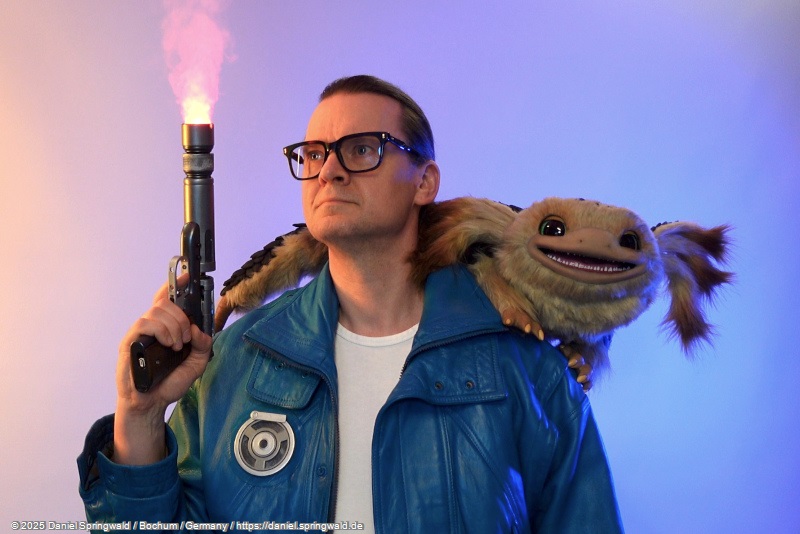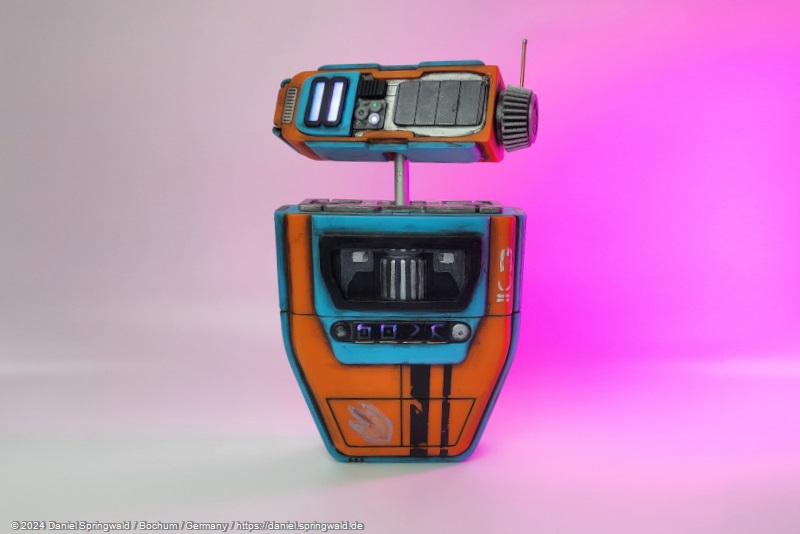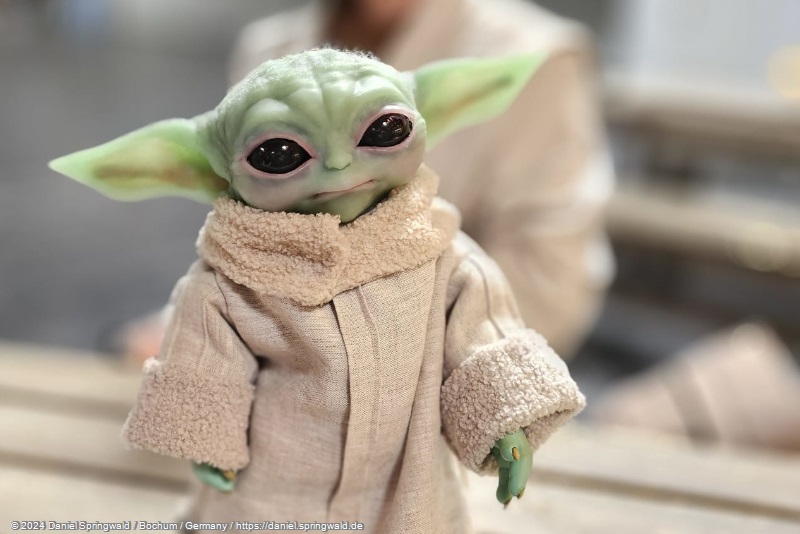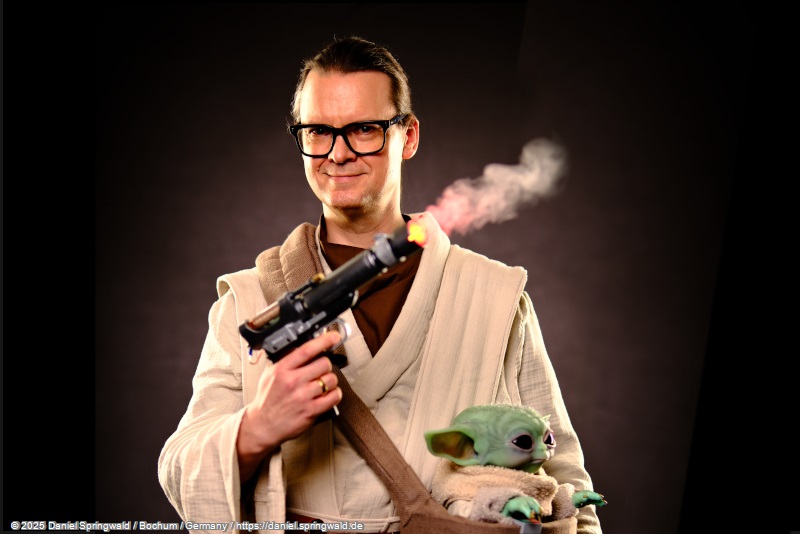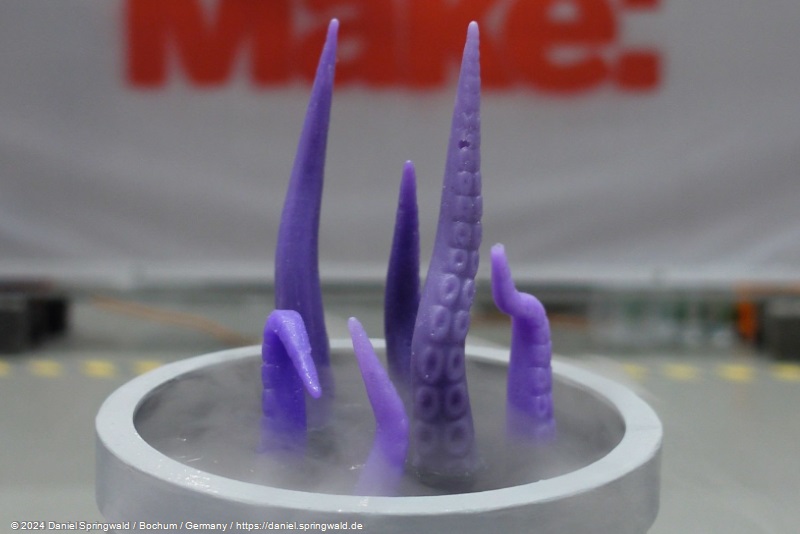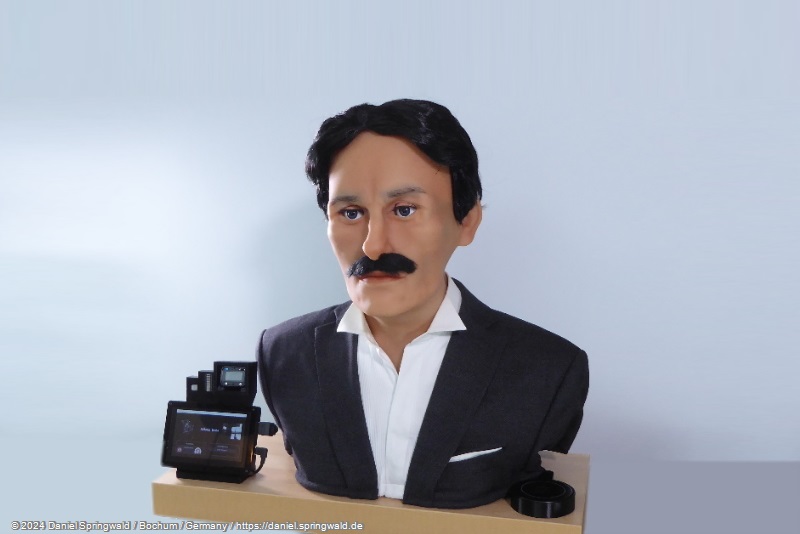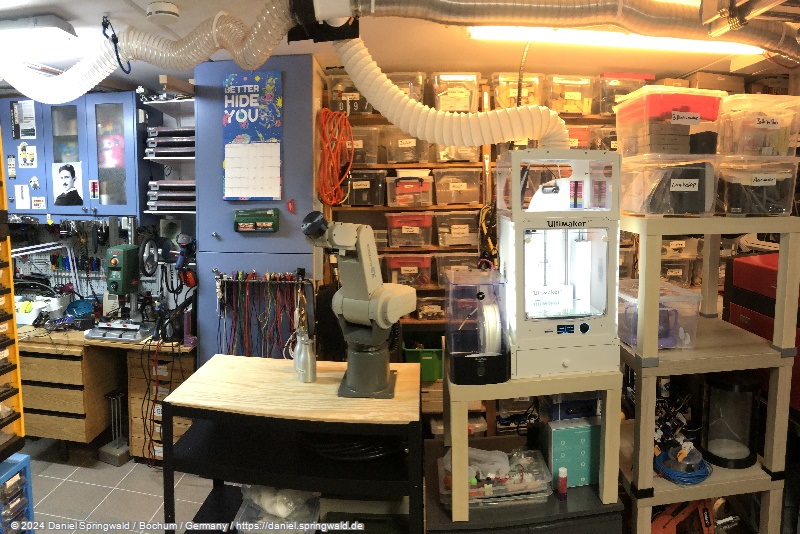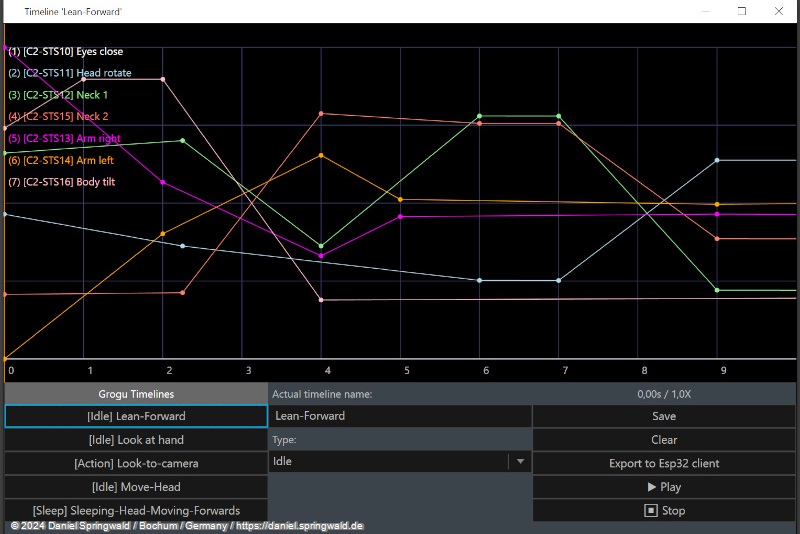"Nix" is now my fifth project in a row from the Star Wars universe, although I wasn't 😀 originally a big fan of this franchise. Actually, I'm not a gamer either, but through the numerous videos on YouTube, I became aware of the sidekick "Nix" from the video game "Star Wars Outlaws". The look and the possibility of having the character sitting on my shoulder during cosplay inspired me so much that I went straight to the animatronic implementation. Luckily, my previous project, the animatronic PIP Droid had just been finished and so it all fit together perfectly.
Nix had its premiere after 7 months of construction at the Power of the Force Convention in May 2025 in Cologne. There was a lot of positive feedback - especially the podcast Datacrons - The STAR WARS Lorecast spoke highly of Nix in its Bonus Episode - POTF 2025.

Winner "Best Prop" of the RPV Cosplay Contest 2025
Also feel free to watch the video of the RPV Cosplay Contest 2025, where I won first place in the category "Best Prop" with Nix:
Head
Since I am not a 3D artist, I have (as with the Grogu and PIP Droid bought the basic 3D model of the character on a 3d marketplace. This time I combined three different models of F23dprints, MakMade and Maker&Shaper.
Silicone Skin
Since the face and especially the mouth were supposed to move, pure 3D printing on the mouth would probably have looked like an old ventriloquist's dummy. Here (as with the Grogu).
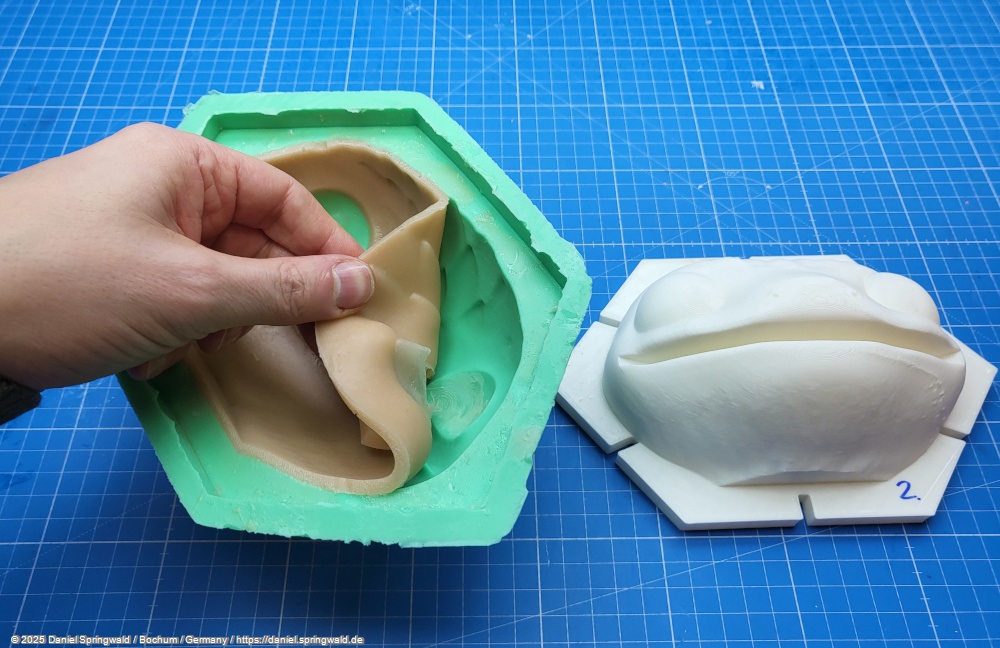
To do this, you first print out the face in a 3D printer and cast a negative mold of comparatively hard silicone. As a counterpart to this, you now need a slightly smaller version of the head, which you place in the negative mold and fill it with softer silicone (Shore 10). The distance between the two molded parts determines the thickness of the later silicone skin.
In the original, Nix's face consists of only a small part of skin, which merges seamlessly into fur to the chin and eyes. This turned out to be a challenge, because the usual hair punching (i.e. the insertion of individual hairs with a special needle) would be almost impossible with such a thick coat without completely perforating the silicone as a carrier structure. Therefore, I used the artificial fur for the dense part of the face, which is also what the body of the figure is made of. The transitions to the skin are covered with tufts of hair from the artificial fur and then shaped and trimmed with a razor.
Underskull and Eyes
Based on the smaller head version of silicone casting, a so-called "underskull" is usually created in animatronics. It corresponds to the skull bone of the head and contains the mechanics for the movement of the mouth, eyes, ears, etc.
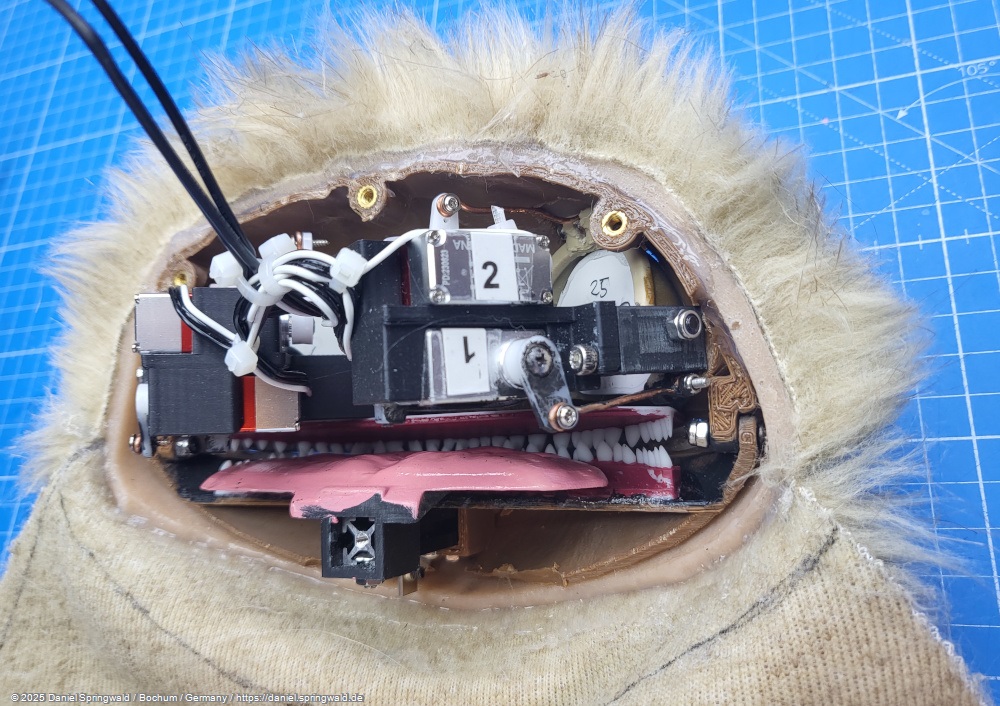
With my animatronic Nix, the eyelids can be moved by means of a total of 4 servos. The eyes themselves are made of a large vitreous body that I bought in the Teddy doll accessory. The actual eye color is printed on photo paper and then glued to the back of the vitreous body with epoxy resin, which keeps the eyes transparent at the transition.
 The
The

This leads to the optical illusion that the eyes always look directly at the viewer and follow him. Therefore, I was able to do without the mechanical complexity of turning the eyes left/right.
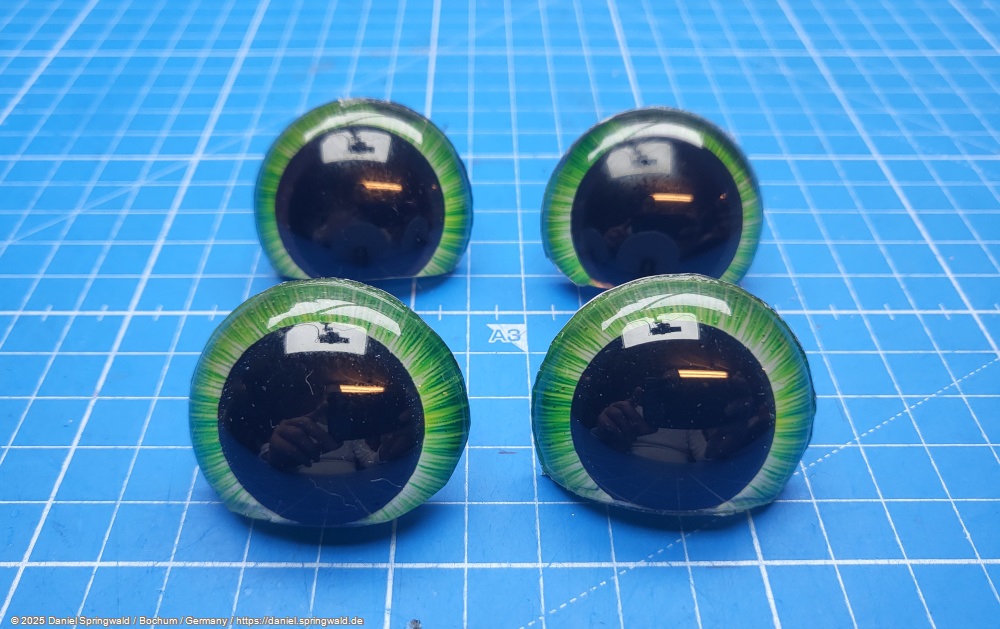
The development of a mechanical underskull in combination with the silicone mold is always a real challenge for me, especially in terms of the space required by the mechanics in my head. Especially since the mechanism for moving the ears also had to be accommodated in the head. I created several prototypes to optimize the mechanics and the servo positions.
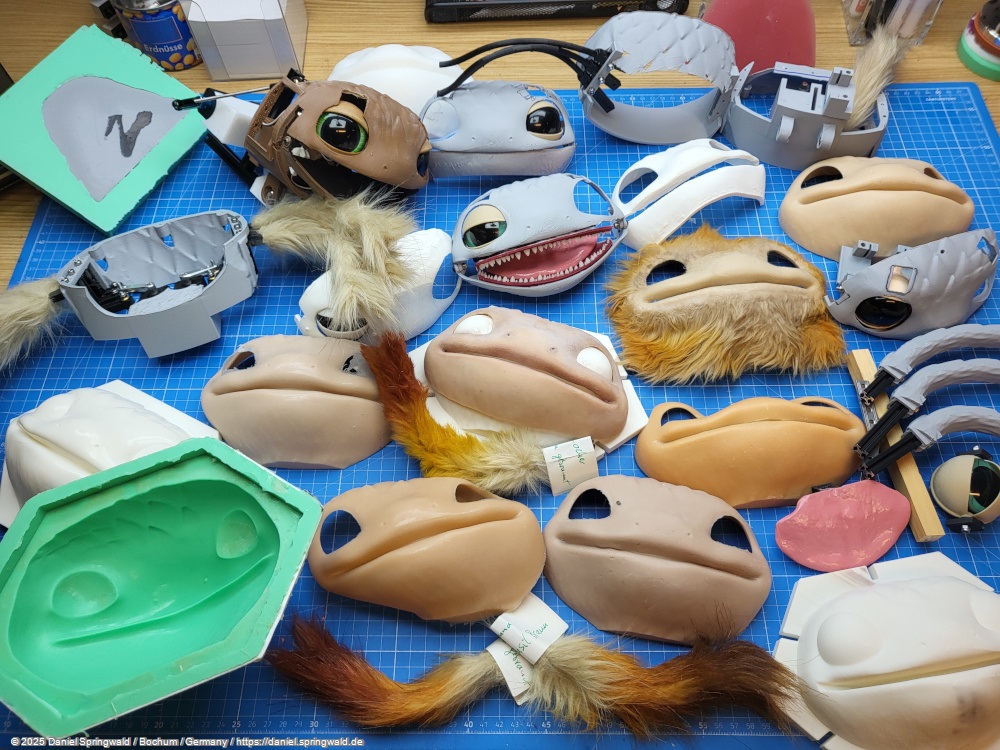
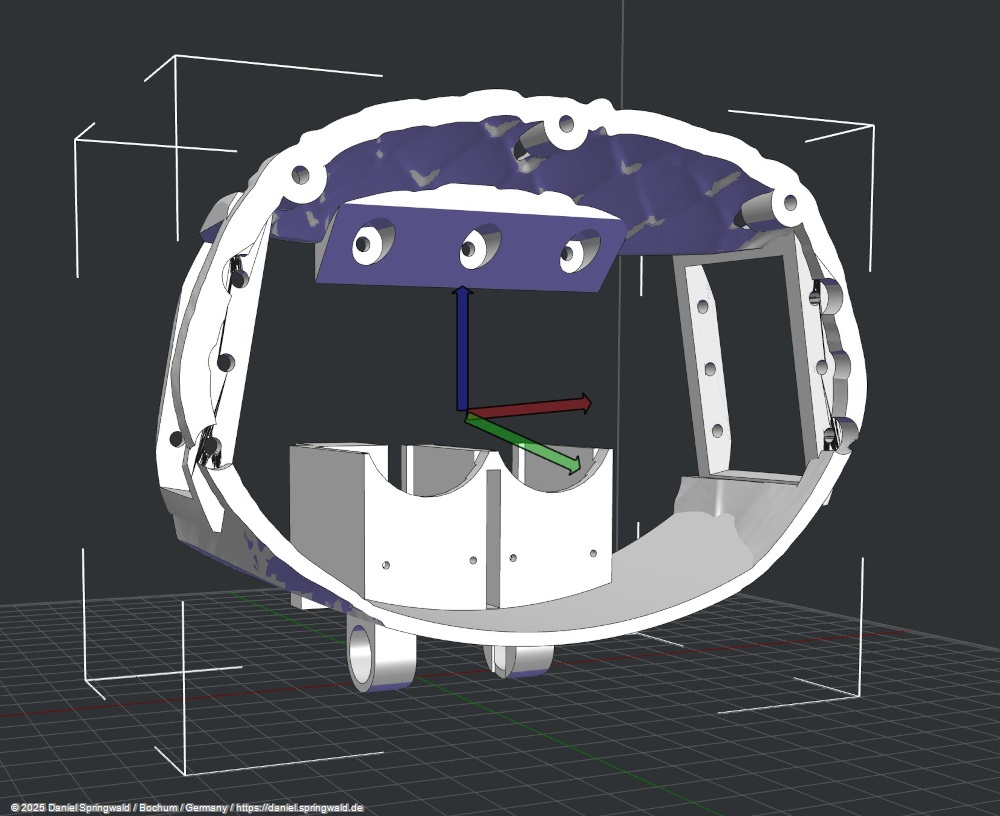
Tongue
To make the tongue look as realistic as possible and also a little moist, I coated it with gloss varnish after 3D printing. Originally, Nix was also supposed to be able to stick out his tongue, e.g. to drink from his bowl, if I would implement a more autonomous position in addition to the "sitting on the shoulder" mode. The idea was to extend the tongue on a small sliding sled.
In the end, however, it turned out that there was not enough space left in the head for the sliding slide or an additional servo. I have therefore omitted this feature.
Ear "tentacles"
Instead of ears, Nix has three fur tentacles on each side that can move up and down. On each side, this is implemented by means of a STS3215 servo for all three ears. To make the movements look as organic as possible and the tentacles don't break off when they are bumped, I 3D printed them from TPU rubber and later glued fur on them. The TPU is very flexible and does not break as quickly as PLA or PETG. Therefore, nothing happens if the ears get stuck on my neck or Nix ears are trapped in the bag.
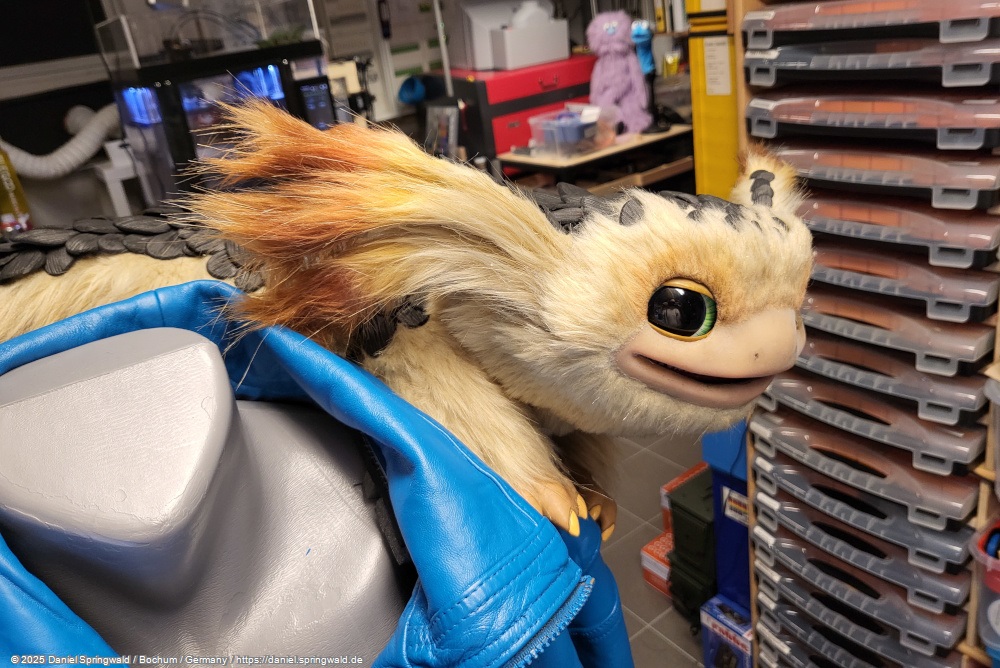
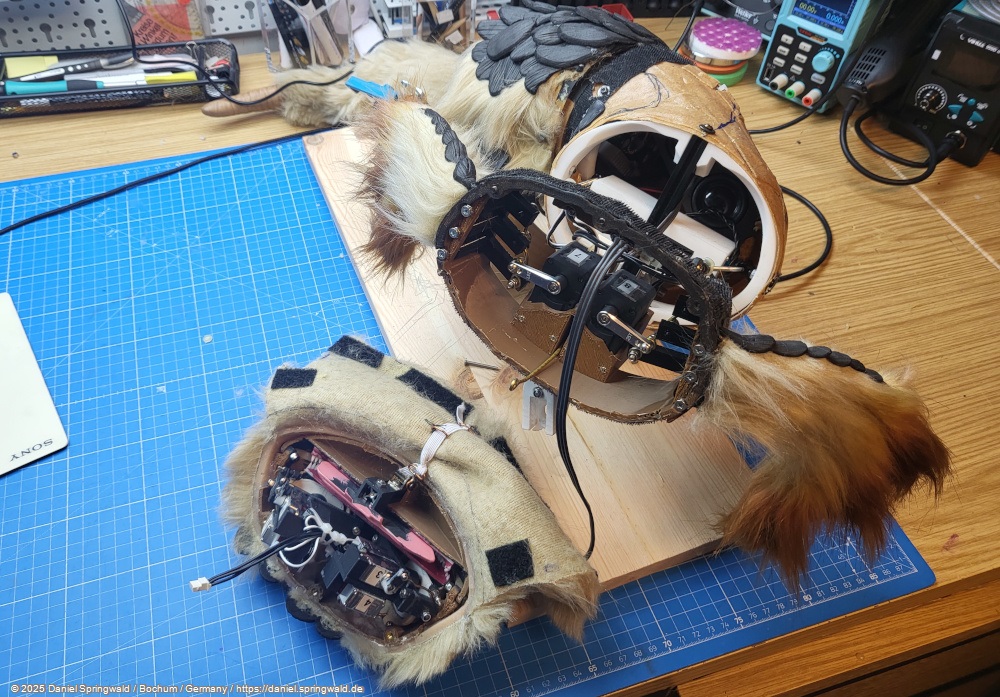
Neck Movement
Since the head is quite large, I was skeptical whether the STS3215 servos used in previous projects would be powerful enough to move the neck. But I wanted to try it at least once and not use the expensive Dynamixel servos that are built into the Nikola Tesla bust. Fortunately, this worked well - the STS servos are strong enough and yet still quiet enough not to disturb.

Body
The core of the body is made of a sturdy aluminum construction, connected to numerous Makerbeams. This construction is resilient, but still reasonably light, so I can carry Nix on my shoulder. The rough shape of the body consists of individual "ribs" printed from PLA with a 3D printer. These ribs are each bolted to the aluminum frame.

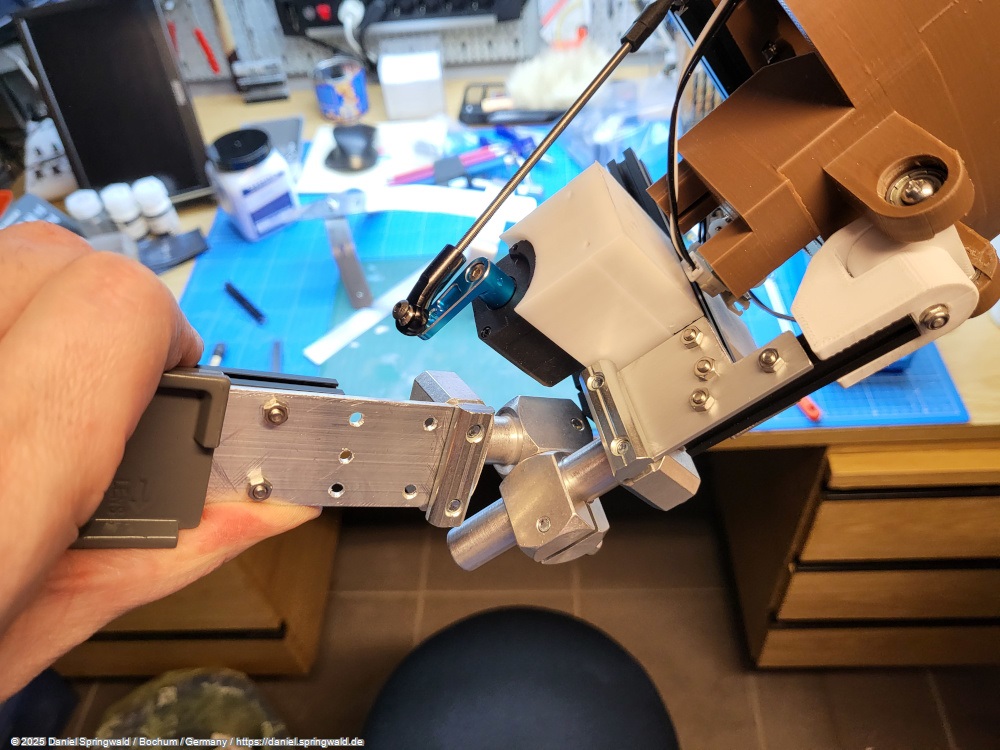
On the outside, the body is largely made of Worbla plates that rest on the ribs. The material is very light and easy to work with. It is heated with a hot air gun, for example, and then shaped into the desired shape.
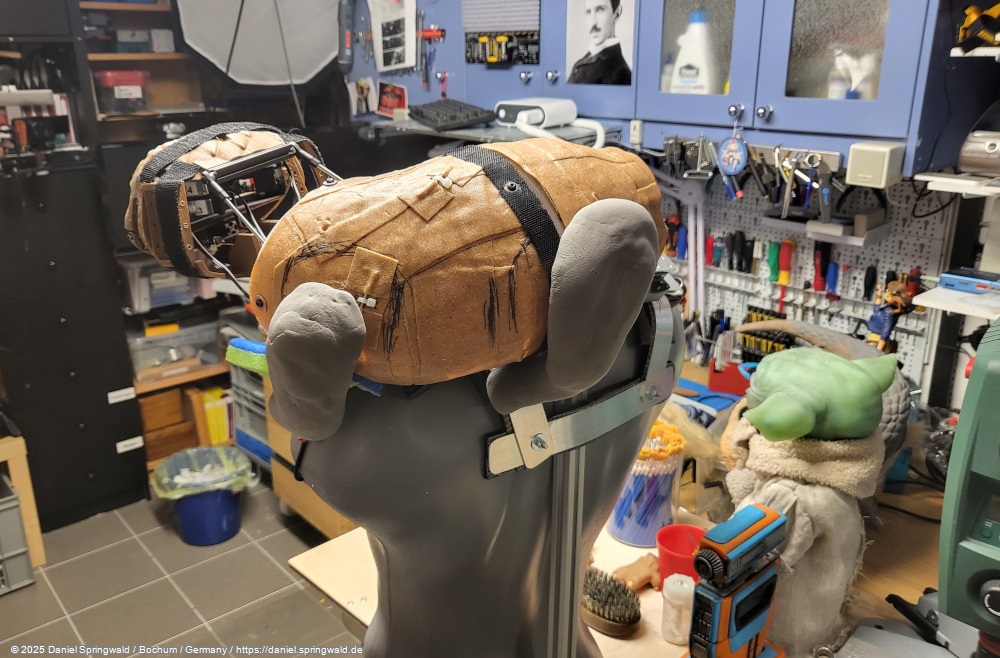

The legs are made of crumpled aluminium foil on the inside and are moulded from a lightweight foam modelling clay on the outside. The paws are made of PLA using 3D printing. Magnets are built into the top of the legs and bottom of the paws, which make it possible to attach the legs to the body and jacket.
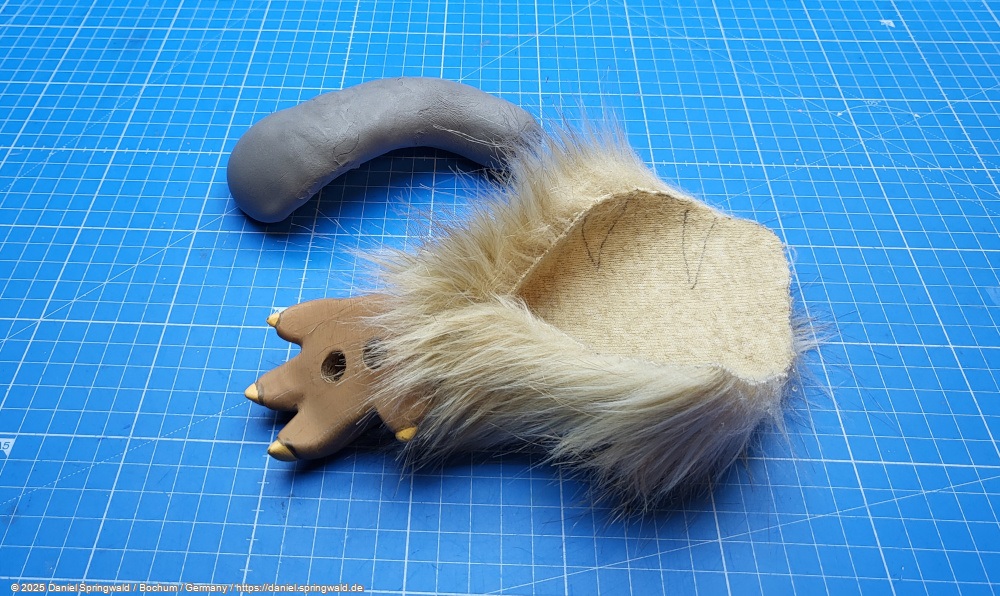
Fur
It was not so easy for the fur to find the right material. Unfortunately, I didn't find a suitable faux fur in the local fabric store and craft stores. At Amazon and Co. I was able to buy faux furs that looked good in the photos, but none of them were dense enough. There, the underlying base tissue was visible in the areas that were later cut short. After some searching, I found a faux fur fabric at webpelzshop.de that is very densely woven, has sufficiently long hair and also a great structure.
Shed
The scales were also a pretty exciting topic. After initial attempts with 3D printing in TPU rubber and PLA did not yield any usable results, I got the tip in the Twitch stream to use foam rubber. I didn't really take that seriously at first, because I would have missed the structures of the scales. Until I came up with the idea of giving the foam rubber a new structure with a heat gun and a texture roller.
First, the laser cutter cut different sizes of scales from foam rubber.
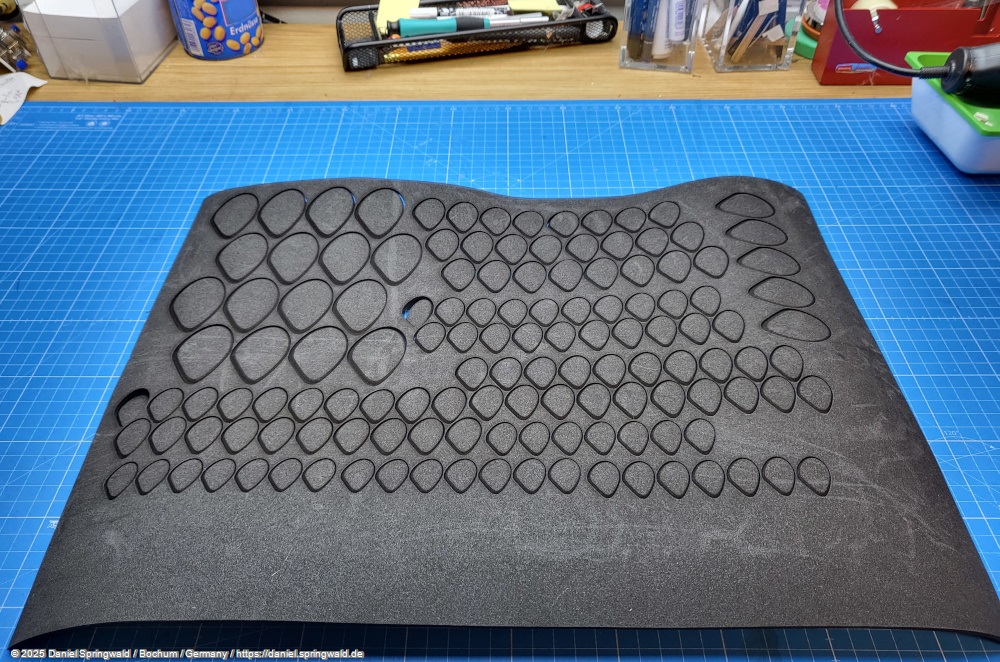
Then the scales were heated with the hot air gun and quickly (as long as the scale is still hot) treated with a texture roller. The result was surprisingly good: the scales look quite realistic and have even acquired a slight anthracian shimmer through the process.
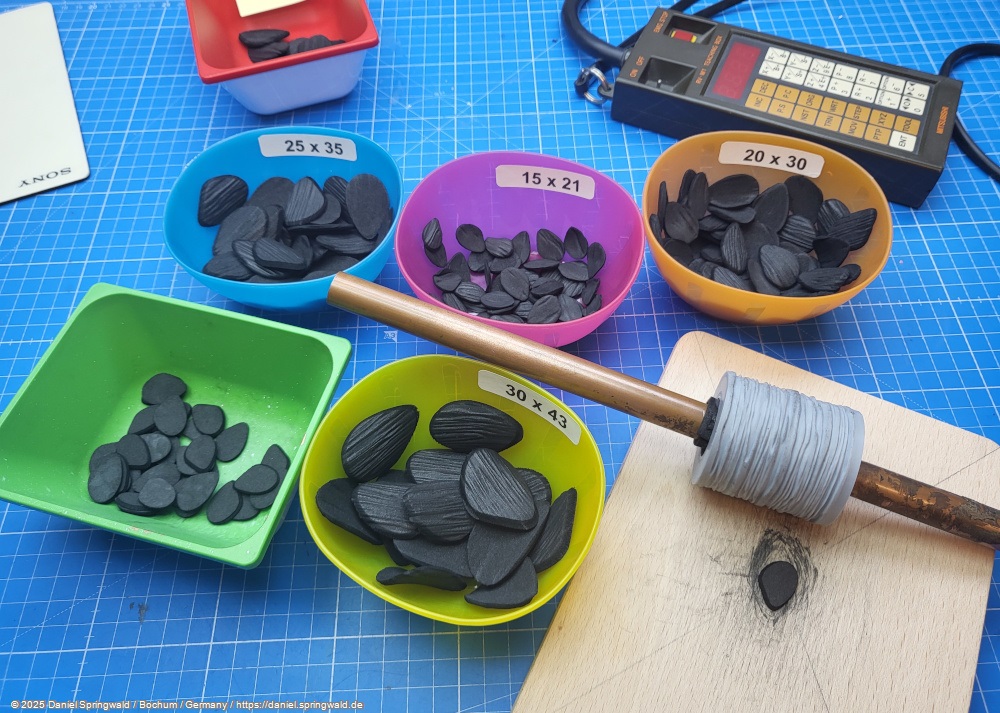
Unfortunately, I don't have three arms to be able to use the heat gun, the roller and the scale gripper at the same time. But since I needed an incredible number of scales for Nix, it made sense to automate the manufacturing process, at least partially. This seemed like a good opportunity to test my industrial robotic arm. He was given the task of holding the heat gun on the scale to be worked on for 10 seconds and then automatically swinging it to the side so that I could work on the scale with the roller. This worked surprisingly well and so I was able to produce a larger amount of dandruff in a short time.
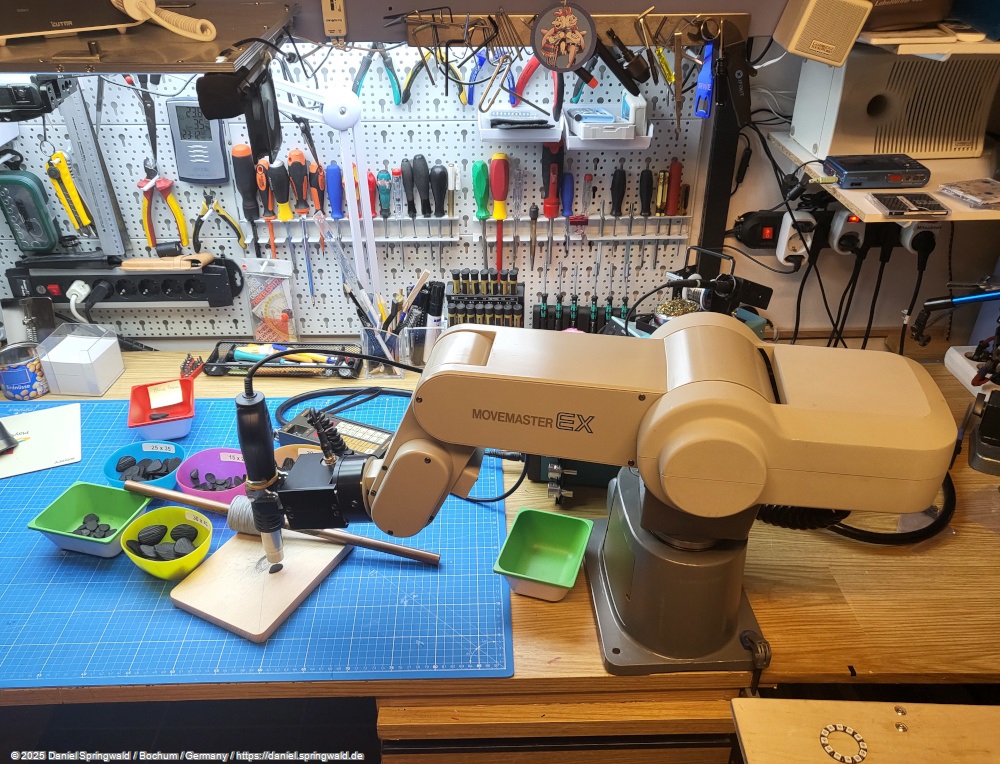
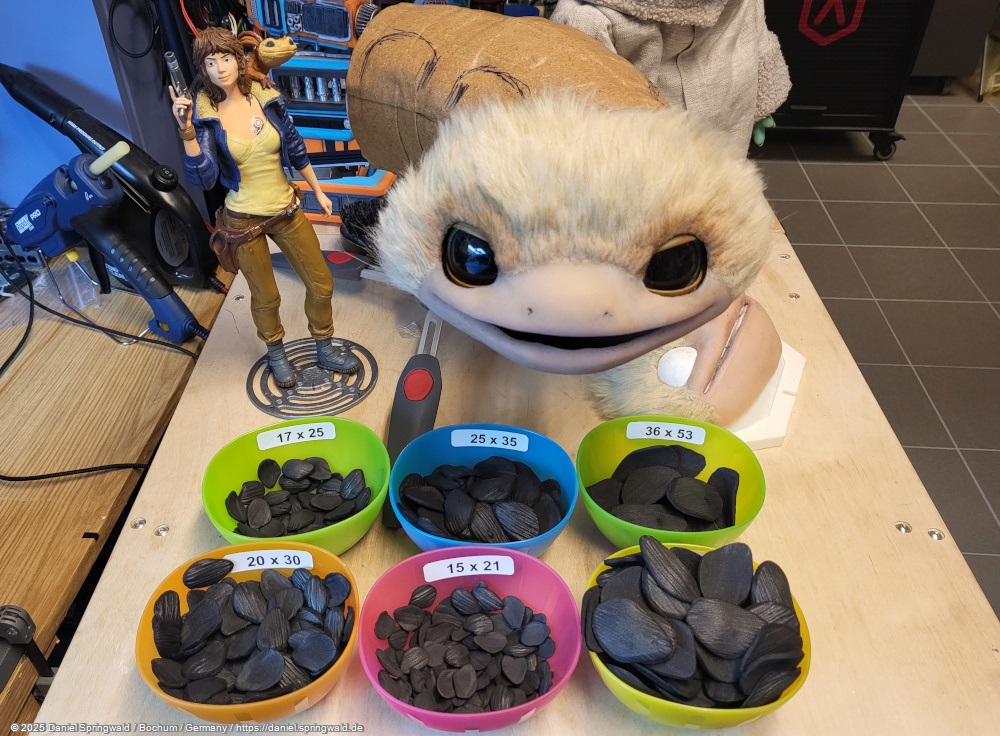
Since the figure is also supposed to move, the fur and scaled armor had to be reasonably elastic. Especially with the coat, however, this proved to be very difficult, as it is unfortunately not stretchy at all. So I would have had to orientate myself on the longest extension, so that the fur would have thrown unsightly waves when pushed together.
As a solution, I cut the fur into strips in 90° to the desired direction of elongation using a laser cutter and then glued it to elastic fabric.

The same requirement existed for the part of the body that is not covered with fur, but with scales. Here I attached the scales with a slight overlap to an elastic fabric with a small drop of hot glue. As a result, the entire body is elastic and can stretch with the movements of the figure.
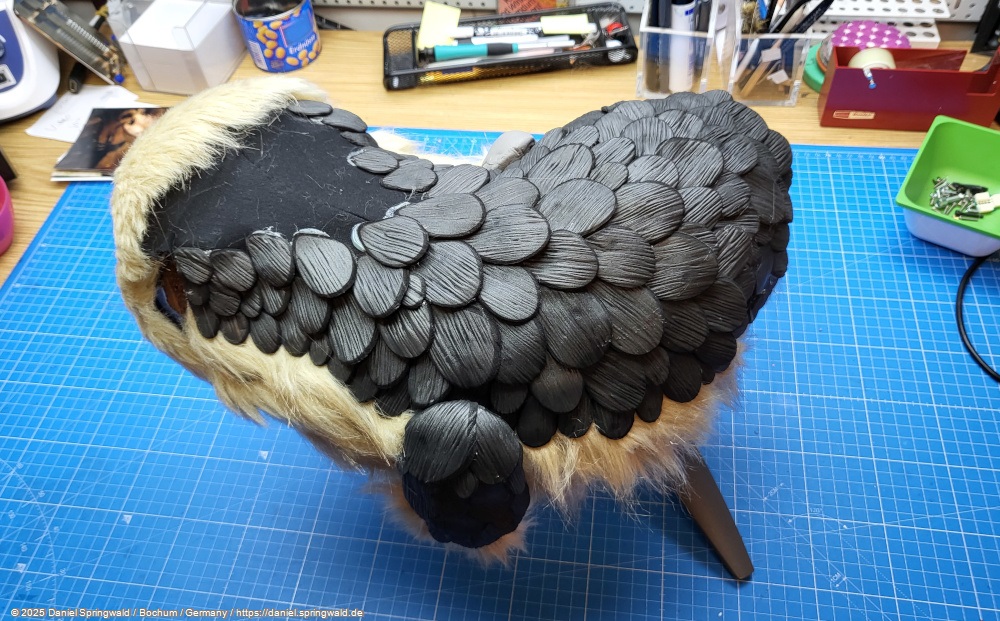
Shoulder mount
The finished Nix weighs about 3 kg and is supposed to sit on the shoulder. For this to hold, there must be a stable connection between the figure and the shoulder. At the same time, however, I would like to be able to easily remove Nix for transport and repairs.
The first idea was a screw connection with correspondingly thick screws. However, this would always have meant a lot of effort and fiddling work when attaching them - and the risk of losing screws or nuts on the way. That's why I decided to use a quick-release fastener based on two photo tripod interchangeable plates . These are very stable and can still be attached and removed with a flick of the wrist.
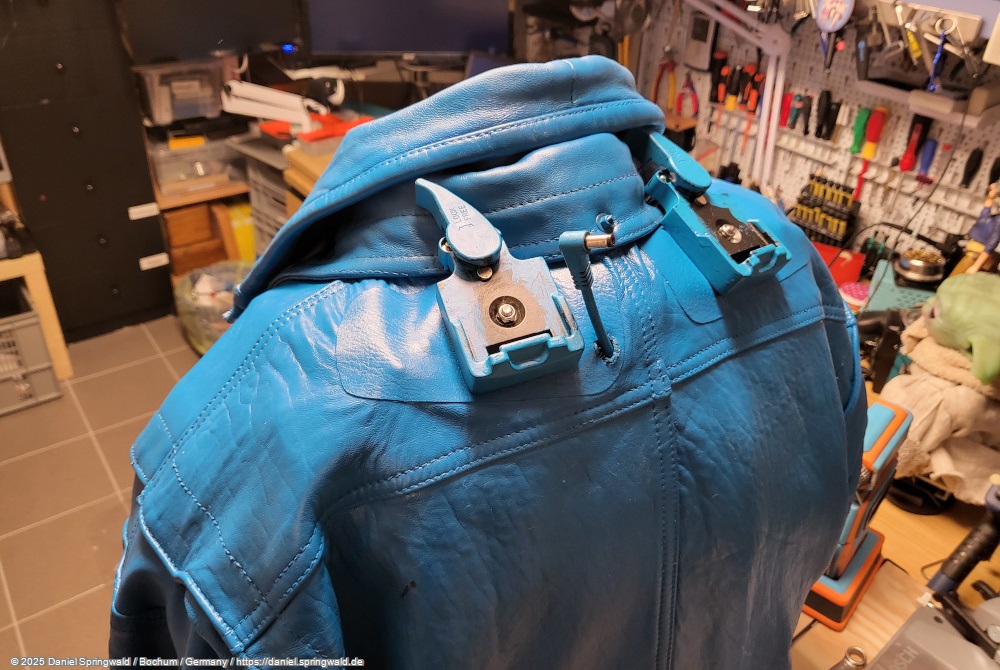

The holder itself is made of sturdy aluminum profiles and hidden in the jacket. It is shaped in such a way that it fits on the shoulder similar to the straps of a backpack and cannot slip so easily.

Electronics + Software
The electronics are identical to those of the animatronic Grogu, with the only difference that this time the battery is not in the body of the figure, but in a belt bag. This allows me to easily change the battery without having to take off the figure and the weight on the shoulder is less. Otherwise, the ESP32, the two voltage converters, the bus-servo adapters, Mp3 player and amplifier are identical. Of course, I also used the Animatronic Workbench.

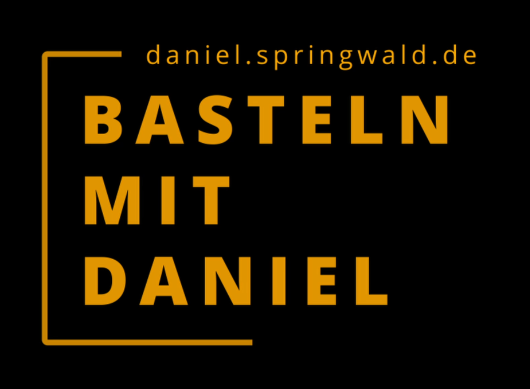
 Daniel
Daniel deutsche Version anzeigen
deutsche Version anzeigen